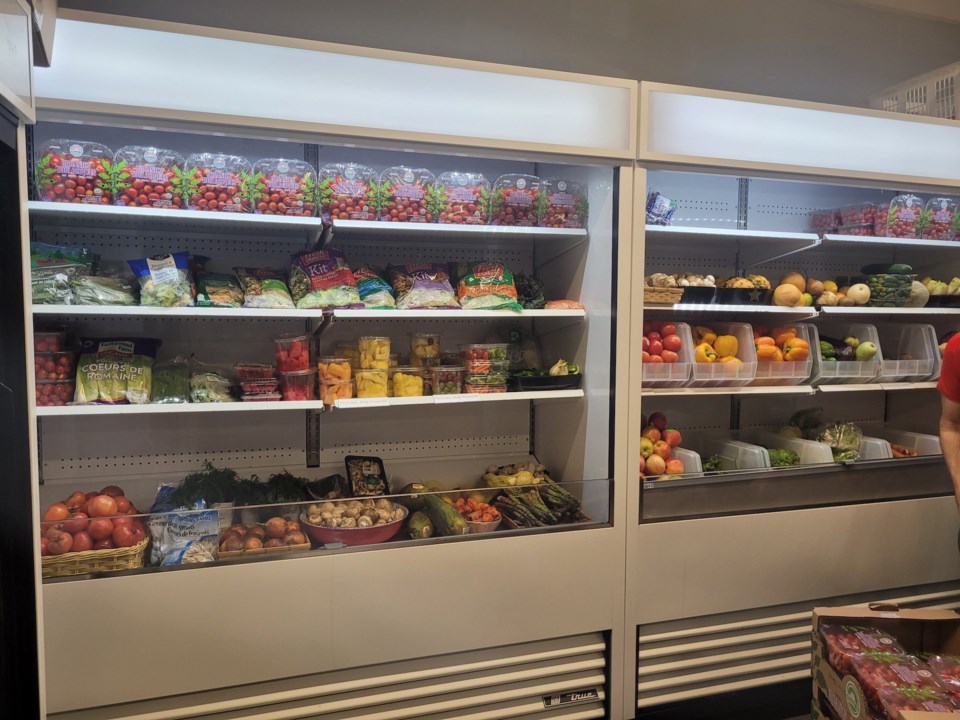The number of people experiencing homelessness in Squamish has increased somewhat since 2021, according to a recent release of data by BC Housing.
Disconcerting takeaways from this stark reality for Squamish Helping Hands Society include the increase of seniors and Indigenous Peoples experiencing homelessness in Squamish.
By the numbers
The Point in Time count found there were 119 people experiencing homelessness locally in 2023 compared to 107 in 2021. The Point in Time surveys those experiencing homelessness over a 24-hour period. In 2023, this took place in Squamish between April 24 and 25.
Of the 119 people, 67% were between the ages of 25 and 54, 24% were over 55, and 9% were under 25. About 64% of the respondents identified as men, 33% identified as women and 3% identified as another gender.
Compared with 2021, the 55-plus demographic had increased by about 7% overall, which confirmed to Lori Pyne, executive director at Squamish Helping Hands Society, what staff had been seeing in their programming.
“Before the survey came out, we had identified we were seeing more seniors come through in our programming,” said Pyne.
She said with an older population, they need to offer people more “wraparound support” for their mental health, physical health and more.
She said an important consideration was where seniors with such complex care issues could go since long-term care facilities largely cannot take on some of these needs.
“They are being left to the shelters to take care of and that’s not ... great for our senior population to be looking forward to,” she added.
‘It’s alarming’
Another sobering statistic was the increase of those who identify as Indigenous who were experiencing homelessness. Compared with 2021, there was a 14% increase—from 18% to 32%—despite Indigenous Peoples only accounting for approximately 3 to 5% of the population captured in the census.
“It’s alarming,” said Pyne.
As 2023 was just the second year of this specific survey, Pyne said they may have done a better job at capturing the homelessness picture in Squamish, but that doesn’t diminish the fact that it is an issue.
New to this year’s survey, as well, 60% of those identifying as Indigenous reported having lived or had generational experience with residential schools.
Pyne called this statistic alarming, but unfortunately not surprising.
The Squamish Chief reached out to the Sḵwx̱wú7mesh Úxwumixw (Squamish Nation) for comment for this story, but due to an urgent personal matter, the spokesperson was unable to meet the press deadline. We will update this story when we hear back.
The Nation is close to completion on a new housing project that does hope to combat homelessness in Squamish. Esḵéḵxwi7ch tl’a Sp’áḵw’us Place, meaning gathering place of eagles, is nearing completion, and the five-storey building will contain 27 units with priority for Nation women and children.
Going hungry
Lastly, another significant difference between 2021 and 2023 was the amount of people accessing food services.
There was a 13% in access to food services between the two years, going from 55% to 68%. Pyne said that they certainly have been serving more food to more people recently.
“We’re seeing people that need food that have jobs,” she explained.
Pyne also said that when they conducted the survey in April, about 17% of the respondents had gone over an entire day without food.
As such, Pyne said they are exploring new ways to deliver food services better.
Pyne also said they are always taking food or monetary donations for that program. She said if someone is trying to decide whether to donate one or the other, money is often more efficient since staff know what is needed.
Other statistics released in the 2023 survey
There is more information released in the 2023 survey, which can be viewed on the BC Housing’s website.
In 2023, about 86% of the respondents were considered “unsheltered,” meaning those who stayed outdoors, in vehicles, temporarily at someone else’s house, or using homelessness services. The majority of the unsheltered respondents, 56%, stayed in vehicles, with 15% and 12% staying at another person’s house or outside.
Pyne confirmed that those who stayed in vehicles were not those who may be doing so as part of travel or vacation but those who did so out of necessity.
The remaining 14% are considered “sheltered,” which includes those who stayed in homeless shelters, transition houses for people fleeing violence, youth safe houses, people with no fixed address staying temporarily in hospitals, jails or detox facilities.
About 93% of the respondents said they had an income source, with 28% having a full or part-time job. This is an increase from the 84% who reported having one or more sources of income in 2021.
Along these lines, 41% of respondents reported not enough income being one of the factors as to why they were experiencing homelessness in 2023 compared with 49% in 2021.
From 2021 to 2023, more respondents had been experiencing one year or more of homelessness, jumping from 56% to 63%. Pyne believed this may partially be because those who reported less than six months of homelessness in 2021 may have never been housed since.
“Compared to 2021, fewer respondents have been in the community for less than six months, suggesting many people experiencing homelessness in the community were in the community the last time they were housed,” reads the 2023 report.



.png;w=120;h=80;mode=crop)

